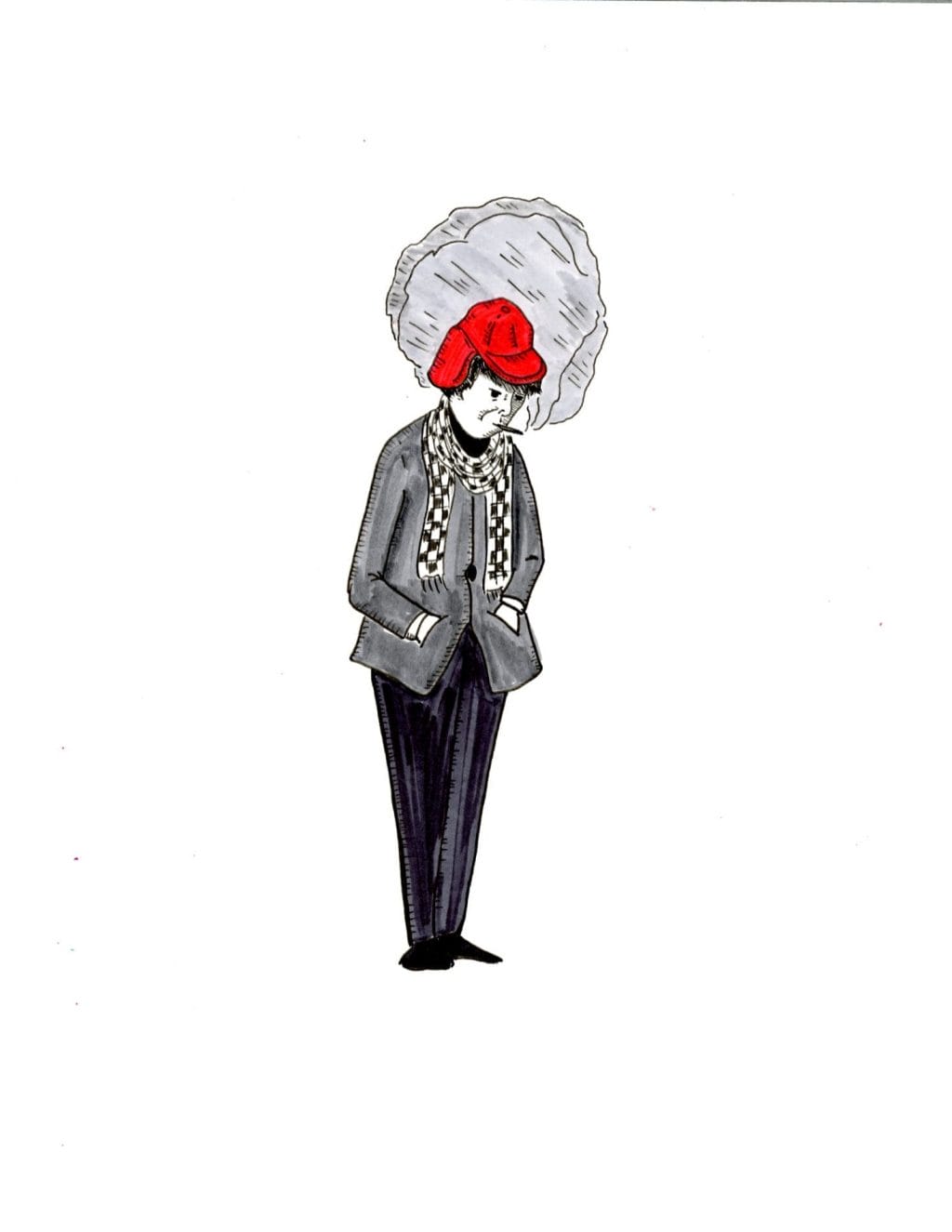Lasting legacy of “Catcher in the Rye”

Illustration by Adam Goodman.
Hayden Taylor
Contributing Writer
I found J.D. Salinger’s “The Catcher in the Rye” while looking through my sister’s old high school book collection. “I heard there’s a prostitute in this,” I thought, “This should be good.” Little did I know, I would be forever changed by the book.
As I read in class, I was terrified and awestruck by the events depicted in the novel which almost perfectly mirrored situations I’ve found myself in. From drunk-calling former love interests to mourning a lost relative, I seemed to connect on personal levels with the main character, Holden Caulfield. It was almost like Salinger wrote the book exclusively for me. I don’t share Caulfield’s mental health issues, but there’s a lot I can relate to in his character. When I was finished, I couldn’t believe what I just read. To this day, I’m still processing how much it means to me. Reading “The Catcher in the Rye” proved to be an important phase in my senior year and even, my life.
The book tackles many aspects of the teenage mind — including angst, boredom and rebellion — which take form in Caulfield. Caulfield finds himself in surreal scenarios traveling around New York City waiting for the next step in his life, which he’s unsure of. From paying for the service of a sex worker, underaged drinking and smoking, Caulfield is pretty much the average teen. My favorite part of the book is the constant stream of insulting thoughts Caulfield has about the society around him. For example, he often calls people phony which is a great way of presenting how many teens think about the world surrounding them. Of course, these intensely provocative thoughts have sparked much controversy around “The Catcher in the Rye.”
There are many schools across the country, and world, that have tried to ban this book because of its vulgar language and mature themes, like drinking and sex. If these schools’ administrations think teens don’t drink and have sex, they must be crazier than Caulfield is. He is an amalgamation of the extreme characteristics of young people. Yes, he uses vulgar language, but so does every teenager. He drinks and smokes — so does about a third of teens in the country according to the Centers for Disease Control and Prevention.
In 1987, a school in North Dakota banned the book because of Caulfield’s sexual thoughts throughout the novel — this was followed by a ban in a Florida school. Despite these bans, the novel was later reinstated because of its importance to literary history. I think banning this book is impressively idiotic. No book has touched as many teenage souls as “The Catcher in the Rye” has. There must be a reason millions of copies are sold every year.
Controversy rose again when “The Catcher in the Rye” was found with Mark David Chapman after he murdered John Lennon. The novel is cited as one of the inspirations for Chapman to commit the crime. Strange how my favorite book helped lead to the murder of my favorite artist — I guess that’s tragically poetic. However, despite all these controversies, I strongly believe “The Catcher in the Rye” should be taught in all high schools across the nation because it gives teens something to relate to and can even act as a cautionary tale. Perhaps if Caulfield had this book to read, he wouldn’t have felt as angsty or alone.


